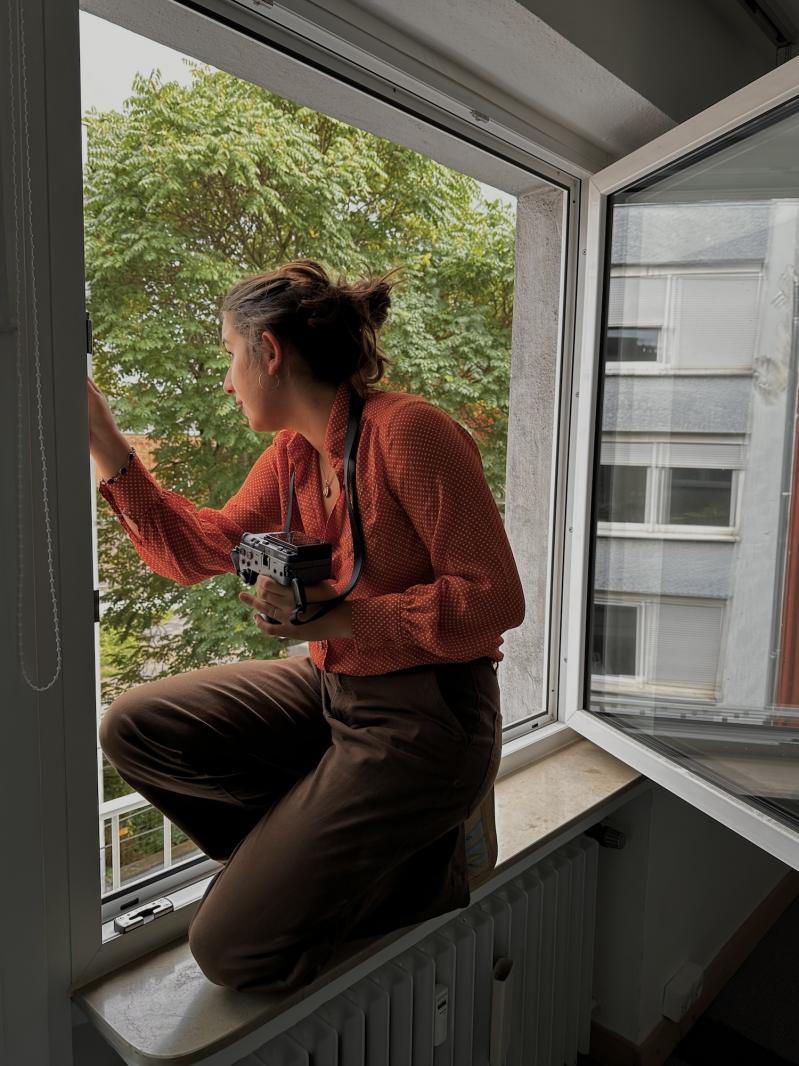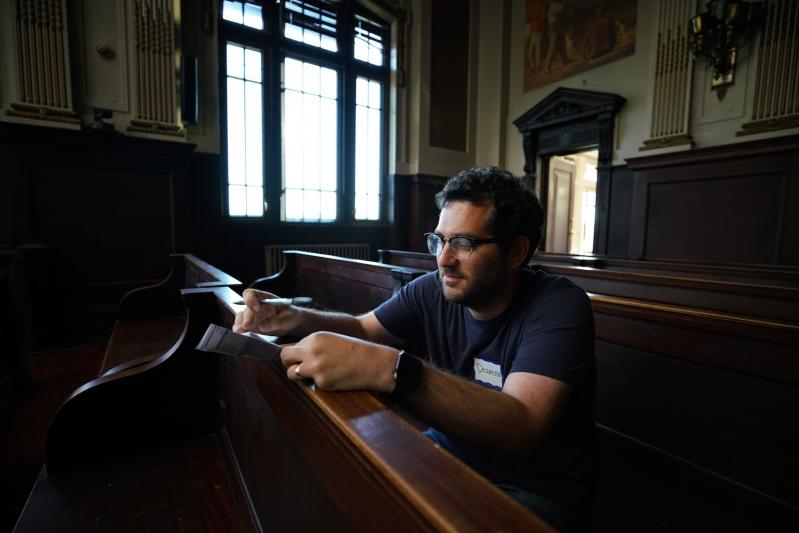Ari Selinger of Sag Harbor fell in love with cinema over the course of many trips to the village’s old video store, Harbor Video. He also credits his love, starting at age 5, of Star Wars.
“There is no right way to make a movie, especially an indie film,” said Selinger, speaking just one week out of filming his first feature, On the End, in Montauk with all the friends he met at 19 in film school. “You find yourself alone on an island with nothing but an idea in your head. You write it down — going to California is optional at this point, I’ve never been to L.A. — and then you eat dirt.”
Selinger will tell you many industry types think indie filmmaking is dead, that you’ll be like Sisyphus pushing a rock up a hill only for it to run you over on the way down, time and time again. But you persevere.
“A golden cast will slowly emerge, surrounding your talented group of sailors, department heads, producers that have come aboard,” said Selinger, whose work — including Moondog Airwaves, shot at Bay Burger, and The Ghost of Hank Williams, filmed at the American Hotel on Sag Harbor’s Main Street in 2019 — is available on Vimeo and Amazon Prime.
“As they say, it only takes one person to notice you. Find that person. Work with them. Then do your work. Dive headfirst into the pool of complete artistic abandon and swim in it until you start shooting. You’ll get swallowed up in the fervor of creation and invention until you get to the belly of the whale and shoot the toughest scenes you’ve ever attempted. And then you emerge, knowing there is nothing in the world better than making an independent movie.”
Selinger is just one of the independent South Fork filmmakers who are proving that compelling narratives and captivating visuals don’t require a Hollywood bankroll.

Adam Baranello, who is based in Hampton Bays, says the script is the first step he takes in approaching a film. It begins with an idea, a spark of inspiration that evolves into a story worth telling.
“Grab a camera and start filming. See what captures your eye,” said Baranello, who started out creating music videos before pivoting to feature films — six of them, so far, with a seventh in progress now. These days, that “camera” can be your smartphone; tech has come a long way.
Home in, he says, on what you want to say, what you want it to look like, and what the style and aesthetic are, Baranello suggests. Because as director, writer, cinematographer, set designer, location scout, lighting and sound technician, costumes, props, key grip, and best boy, you are going to have to answer all of those questions yourself.
The hardest-learned lesson he can share about making films independently is to be patient. “Everything takes time, and don’t expect the impossible,” said Baranello, whose work has been shown in the International Film Festival of Manhattan, Miami Art Week, and the Off Hamptons Film Festival. (It can also be seen online at ajbartspace.com.) “Just because you made a film doesn’t mean anyone is going to watch it, which sounds harsh. You should have hope and be optimistic but grounded in reality.”
While Selinger hasn’t been to L.A., that’s where Anni Spacek, an up-and-coming documentarian from East Hampton, is honing her skills as a rising senior at Loyola Marymount University. She, too, got her start using her iPhone and a GoPro while still a high school student in East Hampton, learning filmmaking on her own time by simply doing. She got pretty good at steadying her iPhone on one knee.
“The best trick, creatively, is training your brain to find beauty in absolutely everything, ” Spacek says. “Look for the macro textures, the bigger and smaller shapes inside of everyday objects. Understanding composition really allows you to play this game with yourself and find so much creativity in the everyday act of observing.”
Found footage can also be a valuable resource. “Once, I was surfing and I dropped my GoPro in the ocean and it sank to the bottom,” she said. “It was filming the whole time. I got this 40-minute clip of fish swimming by, seaweed coming in and out of the frame, moving with the tide.”
Since high school, Spacek has also graduated from her iPhone to a Sony FX 30, “an affordable cinema camera, which I highly recommend.” Her work on this camera and others can be seen on Instagram, @archivedbyanni.

Selinger and Baranello work in the narrative space, while Spacek has fallen in love with documentary. “In a doc, there is a lot of leniency in how technically impressive it looks and how sexy the cinematography is,” she says. “Everyone always says sound is so much more important than imagery. If you can have good sound in addition to a good story, that’s all you really need. The images don’t need to be impressive for it to be a good story — it just needs to get the job done.”
What ties these three filmmakers together, beyond their South Fork roots and subject matter, is the fervor with which they pursue the art.
“If filmmaking is your passion, it’s worth laying your life on the line for. . . . Believe you can do it, because others have,” Selinger said. “And you may find that if you build, they will come.”

